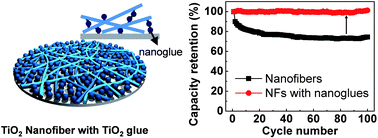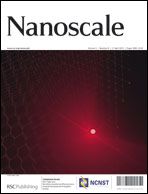Sol–gel nanoglues for an organic binder-free TiO2 nanofiber anode for lithium ion batteries†
Abstract
A TiO2 nanofiber anode is glued using a sol–gel reaction to improve cycle performance and Coulombic efficiencies. The hydrolysis-condensation process produces TiO2 nanoglues consisting of TiO2


 Please wait while we load your content...
Please wait while we load your content...